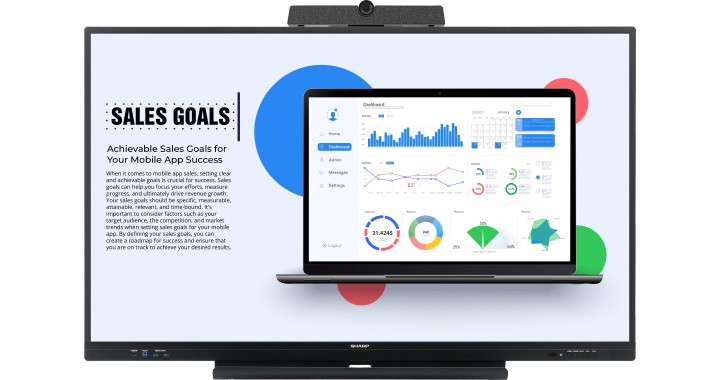With a child in elementary school and another set to enroll this fall, I was thinking a bit this weekend about how the use of technology in schools has changed over time. I started out with projectors and filmstrips, but we quickly moved into those TVs on carts and grainy VHS tapes. In middle and high school we had those overhead projectors. It wasn’t until middle school that we learned how to type (Keyboarding class, anyone?) and Internet access was only available in a relatively few number of homes. During my time in college, the campus underwent a huge connectivity project to provide wired network access in all of the dorm rooms.
Here at Inacom, we’ve engaged with school systems for years helping them create and manage digital classrooms. When we started in 1982, we were a major supplier in the area of Macintosh Computers. As lower cost PCs became more prevalent, we were providing those systems, as well as providing computer repair services to keep them up and running. We built computer labs and created solutions to help IT administrators configure and manage these computers at scale. We’ve created structured cabling systems to wire up buildings with copper for the Internet and wireless networks to keep devices online and connected regardless of their location. Today, much of our focus is on lifecycle management, data center, and managed print solutions. We also do a fair bit of fiber optic cabling as those copper networks age, bandwidth needs grow, and new schools come online. We’re also having conversations about collaborative displays more and more as preparations are being made to cycle out old virtual whiteboards.
Today’s education technology sure has come a long way from when I was a student in the 80s and 90s! In this post, I want to talk about how schools have been integrating technology into the classroom, including the use of interactive displays, laptops, online learning platforms, and game-based learning. It’s pretty neat to see how educators have adapted technology to help children learn. Here are some of the things that I thought about regarding technology for education.
Table of Contents
Collaboration Displays are Becoming Commonplace
At this point we’re several generations beyond that mobile television strapped down to a cart. The overhead projectors with transparent film “slides” turned into virtual whiteboards, and those are starting to disappear as well. Today’s standard is the collaboration display, like our Sharp AQUOS BOARDs. The incorporation of interactive displays in classrooms has revolutionized the learning experience for students encouraging multi-modal learning and increasing collaboration within the classroom.
Collaboration displays combine the traditional written and visual instruction style found in a chalkboard or an overhead projector with video. And because they’re PC powered on the back-end, you also have the ability to call up any application found on a computer. Word Documents, PDFs, Web browsers, etc. Most any form of digital learning material can be made instantly accessible to children in the classroom. You can even print your classroom learning experience out to a nearby school copier for distribution to students. How cool is that!
Students are empowered to actively participate in the learning process, which fosters a deeper understanding and retention of knowledge. With interactive displays, learning becomes more fun and enjoyable for students, as they can interact with the content in a hands-on and immersive way.
One of the key advantages of interactive displays is their ability to cater to different learning styles and preferences. Whether a student is a visual learner, auditory learner, or kinesthetic learner, interactive displays can accommodate their individual needs. This allows for a more personalized and effective learning experience.
Furthermore, interactive displays encourage collaboration and teamwork among students. By working together on interactive activities and projects, students develop important social and communication skills that are essential for their future success.
Another benefit of interactive displays is the real-time feedback they provide. Teachers can assess student progress more effectively and make adjustments to their teaching based on the immediate feedback. This allows for a more targeted and personalized approach to instruction.
Incorporating interactive displays in classrooms holds tremendous learning potential for students. It not only enhances their engagement and understanding but also prepares them for the technology-driven world they will enter as adults. By integrating technology into education, we can create a more dynamic and interactive learning environment that equips students with the necessary skills for the future.
Digital Signage is Showing up Everywhere
Those ubiquitous bulletin boards are slowly degrading into the ether. Digital displays are the next big thing. They’re used to brand the school with school pride and pass along important messages in an exciting, dynamic manner. One of the great features of digital signage comes from the creation and distribution of messaging. Using specialized CMS platforms for signs, one can manage any number of displays from a single pane of glass. Publication schedules let you launch and remove messaging on-time without additional management sessions. And let’s not forget that digital artwork is way faster and less expensive than putting together all of those hand-made elements that would get pinned or stapled to an old school bulletin board.
Harnessing the Power of Laptops in Education
The integration of laptops into classroom settings can significantly enhance learning experiences. Laptops provide students with instant access to a wealth of online resources that can supplement traditional lectures and textbooks. This dynamic blend of traditional and digital resources enriches the learning process and caters to different learning styles. Interactive platforms and multimedia presentations can make complex concepts more accessible, fostering deeper understanding and retention of subject matter.
Furthermore, allowing students to use laptops in class promotes digital literacy – a skillset that is increasingly vital today. Proficiency in using digital tools, evaluating online information, and collaborating in virtual spaces are essential competencies for success in the 21st century. By integrating laptops into the learning environment, educators provide students with opportunities to develop these skills organically and apply them to academic and professional contexts. Restricting laptop use might inadvertently hinder the development of these critical digital skills.
The engagement factor cannot be overlooked when considering the benefits of laptops in education. Laptops can facilitate active learning, collaboration, and participation in classroom discussions. Just this past weekend, my child was working with one of her classmates on one of her first collaborative projects. By having a video chat on their Chromebooks, they were able to show each other their creations, tweak their scale, and double check their recollection of facts from the source material to make their work even better. Allowing students to use laptops can spark their interest and motivation, leading to increased engagement and better overall learning outcomes.
One trend that has become apparent recently is that school staff charged with IT functions are often finding Chromebooks difficult to manage at scale. It’s not just that IT Pros new to education are coming from Windows-centric organizations. Microsoft has been putting together many compelling use cases for schools to move away from Google Classroom. Microsoft 365 for Education offers the very best Office Suite for those student laptops, and email services for students as well. There are also a huge number of teachers that benefit from these same services who are creating new learning materials. And if you’re using Windows based student laptops, Intune offers a compelling value proposition as your provisioning and management platform.
By embracing the use of laptops, educators are preparing students for the digital demands of the future, where technology is an integral part of everyday life and work. By equipping students with the necessary digital skills and familiarity with technology, they will be better prepared to navigate the digital landscape and thrive in an increasingly digital world. The integration of laptops in education is not only about enhancing learning opportunities but also about ensuring that students are equipped with the skills they need to succeed in the digital age.
Transforming Learning with Online Learning Platforms
E-Learning platforms have revolutionized the education industry in the digital age, providing students, instructors, and companies with a flexible and accessible way to learn and teach. My child’s school subscribes to Google Classroom. I’m still a bit lost within it, but my child wizzes around the various screens with ease. She can get her posted homework assignments and I get regular reports of her progress, including upcoming and past-due assignments.
I don’t think you could really adopt any online learning platform without first introducing laptops to the students. But for sure it makes a logical “next step” when creating a digital classroom.
Game-Based Learning: Making Education Fun and Effective
As an educator, you understand the challenges of meeting the needs of diverse learners while keeping student engagement high. Traditional textbook-only learning is no longer sufficient, as students are becoming more tech-savvy at an earlier age and as attention spans seem to shrink. This is where game-based learning comes in.
Game-based learning is a teaching method that uses the power of games to define and support learning outcomes. It harnesses the engagement, immediate rewards, and healthy competition of educational games to motivate students to learn. Research has shown that game-based learning can have a positive impact on mathematics learning outcomes and student participation in the learning process.
The beauty of game-based learning is that it can be applied across all levels of education, from preschool to post-secondary. It can be implemented in various settings, whether through online games, physical objects, or individual and team-based activities. The flexibility of game-based learning allows educators to create engaging and interactive classrooms that cater to different learning styles.
At first, my child was “gaming” to learn her letters and numbers. But it quickly evolved into reading assignments and practicing math. This year she’s been doing a lot of typing, though I must admit that it’s one of her least favorite things to do. But if she’s ever going to get that idea for a Slime Blog for Kids underway, for sure she’s going to have to learn to become a strong typer.
In a Nutshell
As we conclude our exploration of the digital classroom and the integration of technology in education, it is clear that technology has the power to revolutionize the way we teach and learn. By embracing interactive displays, laptops, online learning platforms, and game-based learning, educators can create an engaged and interactive learning environment that enhances student learning opportunities. As educators, school administrators, and educational technology advocates, it is our responsibility to continue to innovate and explore the possibilities that technology offers in order to provide the best education for our students. Let us continue to harness the power of technology and embrace the digital classroom to enhance education for all.
Sources:
5 benefits of interactive displays in classrooms | Virtu
Why Students Should Be Allowed to Use Laptops in Class
A comprehensive guide to choosing the right E-Learning platform
Game-Based Learning: Pros, Cons & Implementation Tips … – Prodigy

